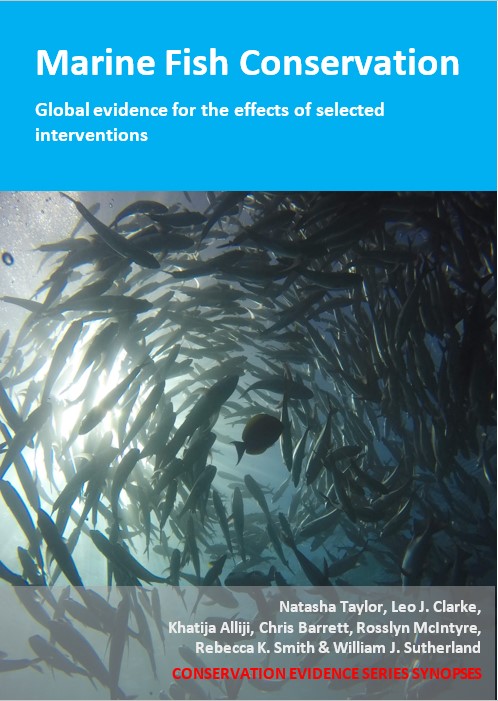Fit a size-sorting escape grid (rigid or flexible) and large, supported escape openings to trawl nets
-
Overall effectiveness category Awaiting assessment
-
Number of studies: 4
View assessment score
Hide assessment score
How is the evidence assessed?
-
Effectiveness
not assessed -
Certainty
not assessed -
Harms
not assessed
Study locations
Supporting evidence from individual studies
A replicated, paired, controlled study in 1995 of an area of seabed in the Gulf of Carpentaria, Australia (Brewer et al. 1998) found that prawn trawl nets fitted with rigid size-sorting escape grids (two designs) in combination with either a large, supported escape opening (Fisheye) or a square mesh escape window, caught fewer unwanted fish compared to an unmodified conventional trawl. Data were reported as percentage reductions. The weight of unwanted fish caught in experimental trials of the modified nets was lower than conventional trawls: by 14–16% with a combined Super Shooter grid and Fisheye escape opening, by 28–31% with a Nordmøre grid and a Fisheye, and by 29–39% with a Nordmøre grid and a square mesh window. The Super Shooter/Fisheye system caught similar weights of commercial target prawns Penaeidae relative to conventional trawls (91–95%), while both Nordmøre systems caught less (Nordmøre/Fisheye: 14–18%, Nordmøre/square mesh: 17–34%). Standard prawn trawl nets were fitted with a combination of catch reduction devices: one of two size-sorting escape grids (‘Super Shooter’ or ‘Nordmøre’) and either a single large escape opening (‘Fisheye’) or a square mesh escape window in the codend. Paired trawl deployments, each with a different modified trawl, were conducted in experimental trials in October 1995 (146 paired tows, length 120 min). Full details of the gear designs are provided in the original study.
Study and other actions testedA replicated, paired, controlled study in 2001 of bottom fishing grounds in the Gulf of Carpentaria, Australia (Brewer et al. 2006) found that prawn trawl nets fitted with a large, supported opening (a ‘Bigeye’) and a size-sorting escape grid reduced the catch of unwanted sharks and rays Batoidea, but not sawfish Pristidae, compared to a conventional diamond mesh trawl net. Shark catches were reduced by 18% and ray catches by 36% in trawls with a ‘Bigeye’ opening in combination with an excluder grid, compared to a conventional trawl. There was no statistical difference in overall catch of sawfish between gear types (grid/Bigeye: 17 fish, conventional: 32 fish). Trawl nets with a Bigeye/grid reduced commercial target prawn Penaidae catches by 6% compared to the conventional trawl. In August-November 2001, data were collected from 23 prawn fishing vessels towing twin trawls, one modified and one conventional, with a total of 1,612 tows for 3–4 hours each, on either side of the vessel. Modified trawls were fitted with an upward-angled grid with an escape outlet plus a ‘Bigeye’ escape opening nearer to the codend and were paired with a conventional trawl used by the prawn fishery. See original study for full escape panel specifications. All catch was identified, weighed, and counted.
Study and other actions testedA replicated study in 1995–1998 of seabed sites in the Atlantic Ocean off the coast of Georgia, USA (Belcher & Jennings 2011) found that the amount of unwanted sharks (Selachii) caught by commercial shrimp trawl nets did not differ between those fitted with both a large, supported opening and rigid size-sorting escape grid compared to just a grid. Average shark catch rates in mongoose nets (most commonly used commercially) fitted with ‘Super Shooter’ grids were similar with and without a ‘Fisheye’ escape opening in the codend (with: 15 sharks net/h, without: 17 sharks net/h). In addition, compared to other trawl/grid types without Fisheyes, shark catch rate with the mongoose/Super Shooter/Fisheye combination was not significantly different (mongoose/Georgia Jumper: 2, flat net/Super Shooter: 2, triple wing net/Super Shooter: 23 sharks/net/h). In April 1995–January 1998 (except February and March), data were collected by fishery observers from 30 trawl deployments using mongoose, flat and triple wing nets, carried out by commercial vessels fishing for shrimp. All nets had a size-sorting escape grid (Super Shooter or Georgia Jumper). Nine mongoose net deployments were made with the supported escape opening (Fisheye) and eight without. See original paper for further gear descriptions.
Study and other actions testedA replicated, paired, controlled study in 2013 of shallow, coastal waters in the Persian Gulf off Iran (Paighambari & Eighani 2016) found that shrimp trawl nets fitted with one of two experimental rigid sorting grids (Nafted or Nordmøre) and either with or without a large, supported escape opening (Fisheye) caught fewer small, unwanted fish compared to a standard trawl without a grid or opening. The Nafted/Fisheye trawl net caught 53% fewer narrow-barred Spanish mackerel Scomberomorous commerson, 45% fewer tigertooth croaker Otolithes ruber and 55% fewer silver pomfret Pampus argenteus than the standard trawl. The trawl with the Nordmøre grid alone caught 59% fewer mackerel, 45% fewer croaker and 55% fewer pomfret than the standard trawl. In total, 15 trawl deployments with each grid type were conducted from a commercial fishing vessel in 2013 in depths of 13–33 m. Tows were 1.5 h long at speeds of 2.5–3 knots. Trawls were double rigged and towed an experimental net alongside a standard net. Both grid types were inclined at 45° with 60 mm bar spacing. The Nafted grid had a Fisheye steel frame sewn into the top of the codend for fish to escape (see paper for gear specifications).
Study and other actions tested
Where has this evidence come from?
List of journals searched by synopsis
All the journals searched for all synopses
This Action forms part of the Action Synopsis:
Marine Fish Conservation





)_2023.JPG)














